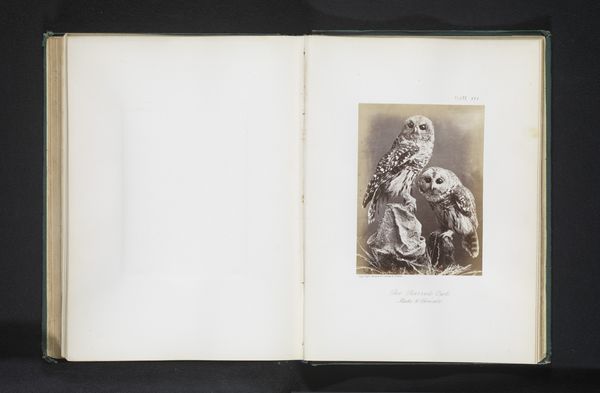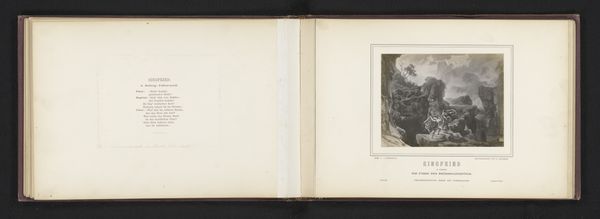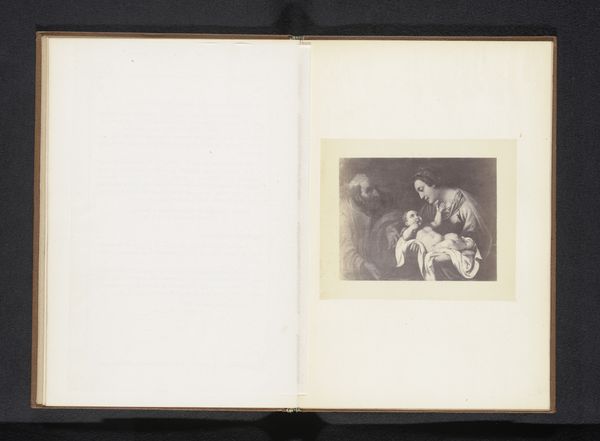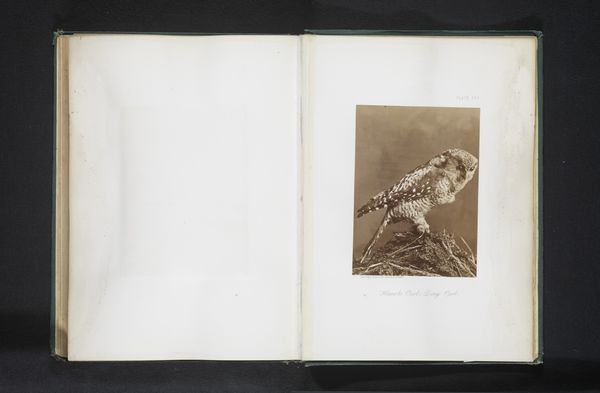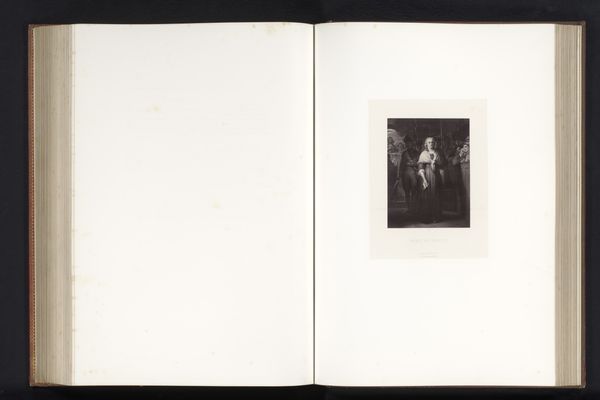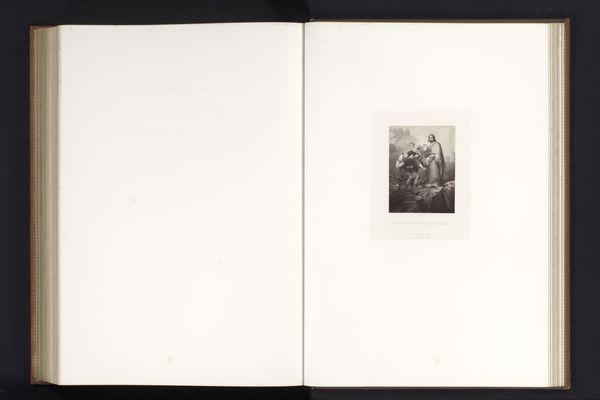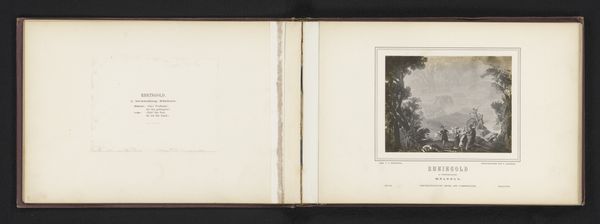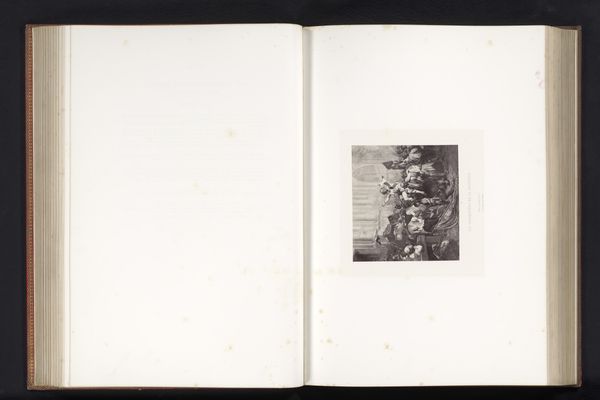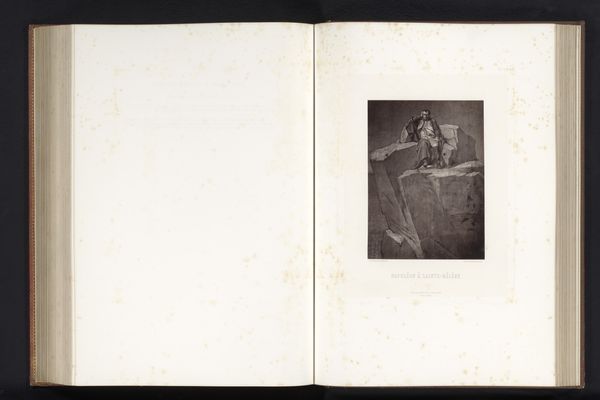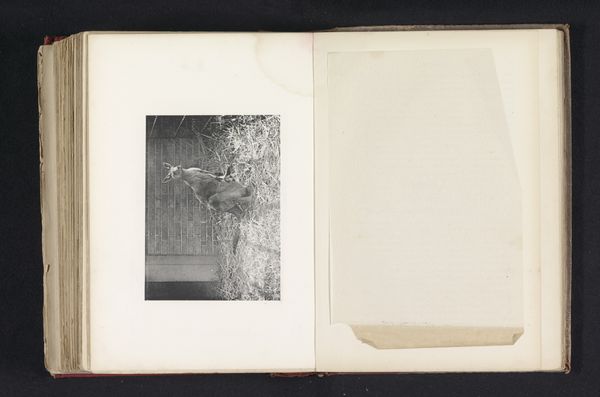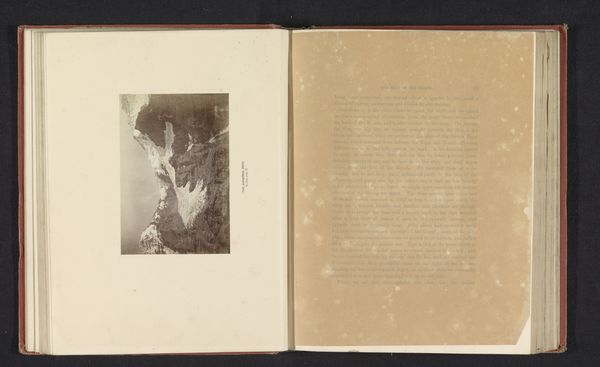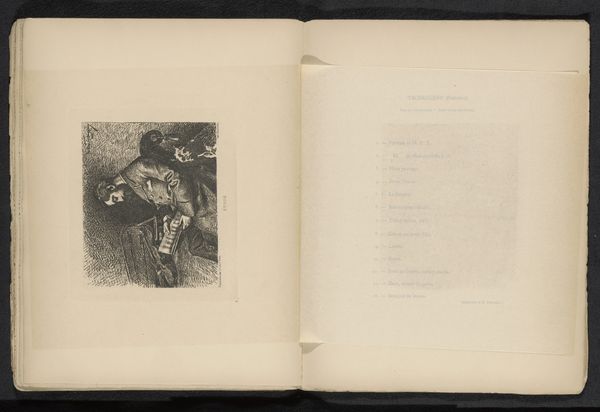
Dimensions: height 139 mm, width 103 mm
Copyright: Rijks Museum: Open Domain
Curator: Here we have "Opgezette velduil", a remarkable albumen print photograph from between 1871 and 1876 by William Notman. It’s part of a larger album. Editor: The immediate feeling is melancholic, don’t you think? The soft sepia tones, the taxidermied owls perched so still…it evokes a sense of Victorian mourning and scientific curiosity intertwined. Curator: Indeed. These were popular ways of displaying one's interests in the natural world, particularly birds. Photography allowed for a hyper-realistic portrayal, a departure from drawings or paintings, further connecting it to scientific discourse and even colonial expeditions which classified, depicted, and collected samples from their foreign expeditions. Editor: The owls themselves are fascinating symbols. Across cultures, they're often associated with wisdom, but also with death and the night. Are we looking at symbols of foresight and arcane knowledge, or a memento mori from this era? Curator: That dichotomy makes them all the more compelling as subjects, especially considering this period in history where our relationship to both understanding, and our exploitation of, the natural world was being shaped. In Notman’s time, the concept of preserving nature for future generations was only beginning to surface within socio-political consciousness. The artist positions nature with an intimate lens to show what we need to conserve and admire. Editor: The stillness is unnerving. They appear so lifelike, yet there's a distinct absence of vitality. What does this tension say about our human desire to control and catalogue the natural world? Curator: I think your comment is crucial in our understanding, it definitely speaks to anxieties of domination, display, and consumption, especially within the specific colonial Canadian context in which Notman operated. It reflects a specific intersectional narrative, which links identity, and colonial ambition within a broader political economy. Editor: Seeing the work in the context of its original album format makes me consider the serial nature of images then, too. They would be flipped through, revisited…these weren't just isolated observations, but collected moments within a larger narrative. Curator: And considering the meticulousness and the scientific purpose that albums often served back then, it asks what we value in them now. Are we marveling at their attention to detail, scientific knowledge, or even acknowledging the dark context of imperial observation and classification? Editor: Perhaps it's all of those, converging into one potent image. Curator: An image prompting necessary questions of a not so distant past, indeed.
Comments
No comments
Be the first to comment and join the conversation on the ultimate creative platform.
